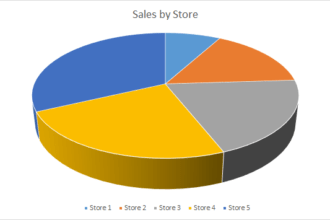 Ever wondered what the “rhythm” of your city looks like? In cities like Rome and New York, aggregated real-time data from mobile providers is helping government officials monitor traffic flows, efficiently utilize transportation networks, and even plan for large-scale events helping to improve overall “citizen satisfaction.” Is real-time data visualization coming to a city near you?
Ever wondered what the “rhythm” of your city looks like? In cities like Rome and New York, aggregated real-time data from mobile providers is helping government officials monitor traffic flows, efficiently utilize transportation networks, and even plan for large-scale events helping to improve overall “citizen satisfaction.” Is real-time data visualization coming to a city near you?The proliferation of mobile and GPS technologies (sometimes in the same handset), are making it possible for city planners, government officials, and even businesses to gain a pulse of the daily movements of entire populations.
An article in the Wall Street Journal, “Cellphone Data Track Our Migration Patterns”, June 10, 2008, mentions how mobile providers are allowing access of anonymized and aggregated location data to social scientists, physicists and urban planners.
The article notes, “More than 3.3 billion wireless-phone subscribers world-wide have, in effect, voluntarily adopted devices that record their daily movements in the same way satellite sensors monitor migrating birds, whales, bears and other wildlife.”
Indeed, network physicist Albert-Laszlo Barabasi says that since practically everyone …
 Ever wondered what the “rhythm” of your city looks like? In cities like Rome and New York, aggregated real-time data from mobile providers is helping government officials monitor traffic flows, efficiently utilize transportation networks, and even plan for large-scale events helping to improve overall “citizen satisfaction.” Is real-time data visualization coming to a city near you?
Ever wondered what the “rhythm” of your city looks like? In cities like Rome and New York, aggregated real-time data from mobile providers is helping government officials monitor traffic flows, efficiently utilize transportation networks, and even plan for large-scale events helping to improve overall “citizen satisfaction.” Is real-time data visualization coming to a city near you?The proliferation of mobile and GPS technologies (sometimes in the same handset), are making it possible for city planners, government officials, and even businesses to gain a pulse of the daily movements of entire populations.
An article in the Wall Street Journal, “Cellphone Data Track Our Migration Patterns”, June 10, 2008, mentions how mobile providers are allowing access of anonymized and aggregated location data to social scientists, physicists and urban planners.
The article notes, “More than 3.3 billion wireless-phone subscribers world-wide have, in effect, voluntarily adopted devices that record their daily movements in the same way satellite sensors monitor migrating birds, whales, bears and other wildlife.”
Indeed, network physicist Albert-Laszlo Barabasi says that since practically everyone has a mobile phone, “Everything we do leaves an electronic fingerprint somewhere.”
While the concept of tracking human movement raises the eyebrows of many privacy advocates, the benefits to exploratory analysis of GPS and mobile data—according to the article—are myriad including, “aid(ing) emergency relief efforts in natural disasters, as well as improving urban planning, public transportation and traffic control.”
The Wall Street Journal article also mentions another case study where MIT and Telecom Italia have teamed through Project “Real Time Rome” to help its citizens and officials make better decisions regarding resource utilization.
Overlaying telecommunications data and Google Earth allows Project “Real Time Rome” to dynamically reveal “the rhythm of the city” through six visualizations:
• Pulse – helps determine commuting patterns and patterns of use for transportation networks
• Connectivity—ensures public transportation is located near populations
• Flow—helps answer the question, “Where is traffic moving or flowing to?”
• Icons— helps answer the question, “Which landmarks in Rome attract more people”?
• Visitors—discovers where tourists congregate
• Gathering—during special events (i.e. Madonna concert), helps determine how people occupy and move through different parts of Rome
Sophisticated analytical applications and data warehousing technologies are helping “bring data to life” for governments, citizens and businesses. I’ve also thought of some other ways this mobile/GPS data could create advantages:
• Businesses could examine historical patterns of people movement to decide where to open their next store/branch
• Real estate agents (commercial and residential) could use the data to determine migration patterns over time
• Businesses could examine the data to determine staffing and inventory levels by day or even hour based on historical traffic patterns in their vicinity
• Variable pricing could be enacted for access to roads or public transportation based on peak-demand usage (ex: toll roads into a city could charge more for drivers during peak hours much like London is doing)
• Chambers of commerce and city officials could use the data to steer promotions/traffic towards a new downtown renovation, places of interest, less frequently visited tourist attractions.
• Special events—mid-city concerts for example—can be modeled based on historical data of traffic, pedestrian flow etc, to ensure future events are more accessible
Through the use of powerful data-visualization applications, government agencies, businesses and citizens are able to explore data to uncover mathematical patterns and connections to help improve the lives of everyone concerned.
So, the next time you visit a major city, hit all the tourist attractions in a timely fashion, avoid the crowds and notice that trains, buses, and taxis run on time and are conveniently located, remember it’s probably not an accident. Good service rarely is.
What are your thoughts?








